|
||||||
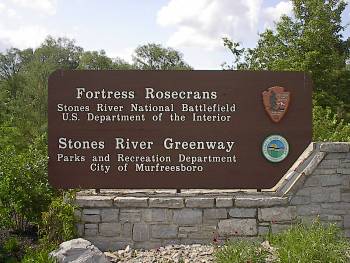 |
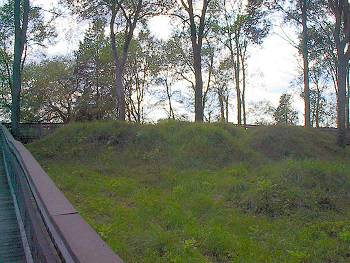 |
|||||
|
(5-03) Fortress
Rosecrans |
(5-03) Fortress
Rosecrans |
|||||
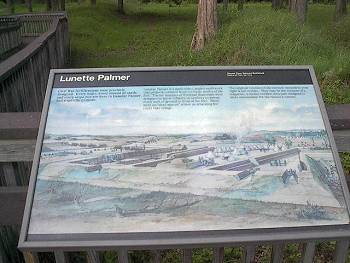 |
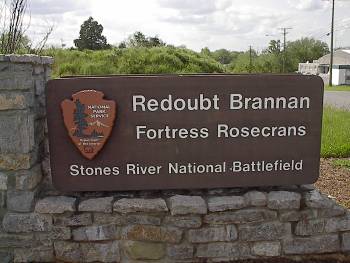 |
|||||
|
(5-03) Enlarge Fortress Rosecrans (Lunette Palmer) |
(5-03) Fortress
Rosecrans (Redoubt Brannan) |
|||||
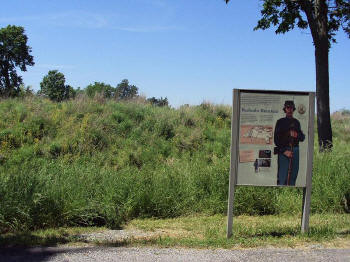 |
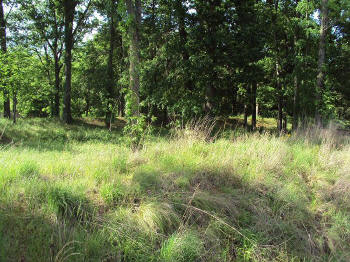 |
|||||
|
(6-2013)
Enlarge Said to have
been the largest earthen fort in America, Fortress Rosecrans was built at
Murfreesboro by the Union Army of the Cumberland in spring and early
summer of 1863. I had wondered before why it took Maj. Gen. William S.
Rosecrans six months to resume his advance on the Confederates at nearby
Wartrace and Tullahoma following the Battle of Stones River, fought Dec.
31, 1862 - Jan. 2, 1863. An understanding of the size, scope, and purpose
of this installation helps to understand the delay, since the cautious
Rosecrans intended to stockpile enough food, ammunition, and other
supplies to sustain 65,000 men for several months of active campaigning.
The 200-acre Fortress was enclosed within three miles of earthworks,
punctuated at intervals by redoubts and other large works like Redoubt
Brannan above, named for one of Rosecrans' brigade commanders |
(6-2013)
Enlarge Bisected by the
Nashville & Chattanooga Railroad, the fortress was intended to garrison up
to 15,000 men who were to protect the storehouses and powder magazines built
within. Being so near modern Murfreesboro little has survived of the
sprawling complex, save the small square Redoubt Brannan and a larger work
now within Old Fort Park next to a golf course. A series of winding trails
connect the remains of Lunettes Thomas and Palmer and their curtain wall.
Some of the traverses in the lunettes ( moon-shaped earthen mini-forts ) can
still be seen, above and below |
|||||
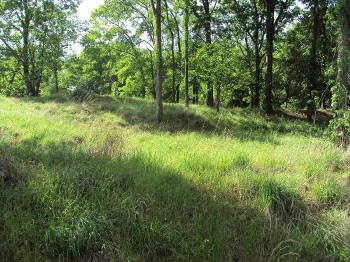 |
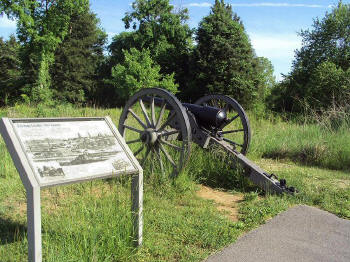 |
|||||
|
(6-2013)
Enlarge The Federals
were concerned for their supply line in part because Confederate cavalry
under Nathan Bedford Forrest had already captured the town and supply base
once before; after the construction of Fortress Rosecrans there were no
further incidents. Despite considerable prodding from Lincoln and Stanton,
once the works were completed Rosecrans moved swiftly, sidling Bragg out
of Middle Tennessee into northern Georgia and capturing Chattanooga with
little attendant loss. Though I've never seen it credited, the stockpile
here surely helped sustain the Army of the Cumberland between its defeat
at Chickamauga and the raising of the halfhearted "siege" of Chattanooga
by Grant in Nov., 1863 |
(6-2013)
Enlarge This is the first
time I'd seen any of the remaining works, most of which are in satellite
units of Stones River Battlefield Park. An interesting example of
intimidation is represented by this portion of Lunette Thomas, named for
corps commander Maj. Gen. George H. Thomas; the Parrott rifled cannon is
located where one was sighted on the Murfreesboro Courthouse, in case of
trouble from the citizenry! |